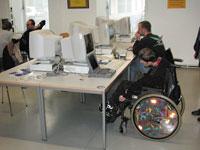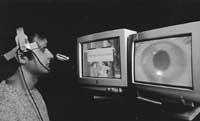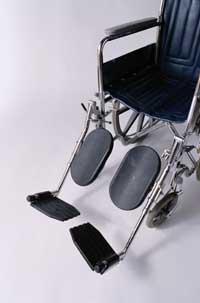Creating intelligent environments
2003/05/01 Andonegi Beristain, Garazi - Elhuyar Zientziaren Komunikazioa Iturria: Elhuyar aldizkaria
Environmental intelligence is for many a new concept, but perhaps others would already link it to the progress of computing and telecommunications. That's right: environmental intelligence aims to create active environments, a network of computers that adapt to the needs of every moment of the user. New techniques are used: context aware ubiquitous computing.
But what are the user's needs? And are those needs the same as those of the disabled? Or the same as an older person? Based on this question, the University of the Basque Country is developing the Heterorred project, in collaboration with the universities of Seville and Zaragoza. Computer scientists want to create a network for everyone, but with a clear idea: we all have special needs to be taken into account from the foundations of technology.
Heterorred, network for all

In fact, technological development has not taken into account so far the needs of both disabled and elderly people. Therefore, in the UPV/EHU they want to create a network that serves both all types of users and all types of devices.
But this smart network should have some basic features. On the one hand, it must offer the user the possibility to connect from all sites, regardless of the electronic device: computer, PDA, mobile phone, etc. And these devices will control all the devices in the network: appliances, computers, wheelchairs...
On the other hand, the services offered by the network will not require special attention or effort for the user. That is, it has to be an invisible network. The user will automatically connect to the network when accessing a site with this type of network. Moreover, depending on where the user is, he will choose some services or others.
Base without limits
These characteristics of the heterorred network require the development of a new technological base. Right now it is the work that researchers are doing in defining the basis of the network. Networks based on different media (infrared rays, radio frequency, cable) must be connected to each other. To do this, it will be necessary to design bridges (hardware) and write the appropriate software for the translation of protocols. In addition, midelware programs should be built to control devices and provide services to users' computers.
All this taking into account users with special needs. In fact, at a conference recently organized by the European Standardization Institutes (CEN, CENELEC, ETSI), the researchers presented a series of proposals for the normalization of this type of networks. In this case, they want to create a network that does not set limits and that, in this way, seeks a real and open network for all new devices and all types of users that develop in the future and that are being developed at this time.
- Project title Heterorred. Research and development of a heterogeneous personal and local network for collaboration and access to wireless services and communications.
- Objective To analyze and develop the hardware, software and midelware programs necessary for the collaboration of heterogeneous networks. This infrastructure will ensure the needs of people with special needs.
- Principal researcher at the UPV-EHU Julio Abascal.
- Working Group Luis Gardeazabal, Nestor Garay, Daniel Eguzkiza.
- Computer Architecture and Technology Division.
- •
- •

Gai honi buruzko eduki gehiago
Elhuyarrek garatutako teknologia






